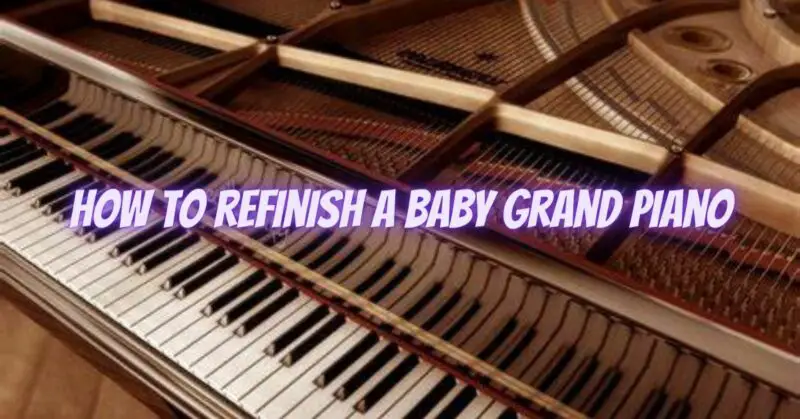Refinishing a baby grand piano can be a rewarding and transformative project that rejuvenates its appearance and enhances its visual appeal. While refinishing a piano requires time, patience, and attention to detail, the results can be stunning. In this article, we will provide a step-by-step guide to help you refinish a baby grand piano, allowing you to revitalize its beauty and showcase it as a centerpiece in your space.
Please note: Refinishing a piano is a complex task that may require professional expertise, particularly if you lack experience or confidence in handling such projects. It is advisable to consult with a professional piano technician or restoration specialist if you are uncertain or if your piano requires extensive repairs or refinishing.
Step-by-Step Guide to Refinish a Baby Grand Piano:
- Preparation:
- Ensure you have a well-ventilated workspace to carry out the refinishing process.
- Remove all hardware, such as hinges and screws, from the piano to prevent damage or interference during refinishing.
- Stripping the Existing Finish:
- Begin by stripping the existing finish from the piano using a paint stripper or a stripping solution suitable for the piano’s specific finish. Follow the manufacturer’s instructions and wear appropriate safety gear.
- Apply the stripper evenly across the piano’s surfaces and allow it to sit for the recommended duration.
- Use a scraper or a fine-grit sandpaper to gently remove the softened finish, working in the direction of the wood grain.
- Repeat this process until the majority of the old finish is removed. Take care not to damage the wood underneath.
- Sanding the Surface:
- Once the old finish is stripped, sand the entire surface of the piano using progressively finer grits of sandpaper (starting with coarse grit and working your way to fine grit).
- Sand in the direction of the wood grain to avoid scratches and achieve a smooth surface.
- Remove any dust or debris after each sanding stage using a tack cloth or a vacuum cleaner.
- Staining (optional):
- If you wish to change the color or enhance the wood’s natural tone, apply a wood stain to the piano according to the manufacturer’s instructions.
- Ensure even application and wipe off any excess stain to achieve the desired color.
- Allow the stain to dry completely before proceeding.
- Applying the Finish:
- Choose an appropriate finish for your piano, such as lacquer, polyurethane, or varnish. Consult with professionals or experts to determine the best finish for your specific needs.
- Apply the chosen finish using a high-quality brush or spray equipment, following the manufacturer’s instructions regarding application, drying time, and number of coats required.
- Ensure even coverage, and lightly sand between coats for a smooth finish.
- Allow the final coat to cure completely according to the manufacturer’s instructions.
- Reassembling:
- Once the finish is fully cured, reattach any hardware that was removed, ensuring proper alignment and functionality.
Conclusion: Refinishing a baby grand piano can breathe new life into its appearance, allowing you to showcase its beauty as a focal point in your space. Following this step-by-step guide, which includes stripping the existing finish, sanding the surface, staining (optional), applying the chosen finish, and reassembling the piano, will help you achieve a professional-looking result. Remember to exercise caution, seek professional assistance if needed, and take pride in the process of restoring your baby grand piano to its full splendor.


